1,1'-(Azodicarbonyl)-dipiperidine
Synonym(s):1,1′-Azobis(N,N-pentamethyleneformamide);ADD;Azodicarboxylic acid dipiperidide;NSC 356027;SR 4077
- CAS NO.:10465-81-3
- Empirical Formula: C12H20N4O2
- Molecular Weight: 252.31
- MDL number: MFCD00010111
- SAFETY DATA SHEET (SDS)
- Update Date: 2024-12-18 16:50:00
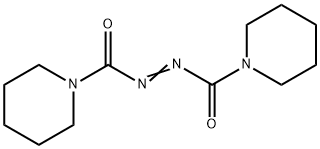
What is 1,1'-(Azodicarbonyl)-dipiperidine?
Description
1,1''-(Azodicarbonyl)dipiperidine (ADDP) is a reagent commonly used in the Mitsunobu reaction for the condensation of an alcohol and an acidic compound. It has been used as a reagent in the synthesis of G protein-coupled receptor 120 (GPR120) agonists with antidiabetic activity and peroxisome proliferator-activated receptor α (PPARα), PPARγ, and PPARδ triple agonists.
Description
Azo-type reagents are poorer Michael acceptors than DEAD, therefore they are generally paired with more nucleophilic phosphine reagents than TPP, such as tributylphosphine or trioctylphosphine.
Chemical properties
yellow crystalline powder
The Uses of 1,1'-(Azodicarbonyl)-dipiperidine
It is used in a study of the copper-catalyzed addition of aryboronic acids to azodicarboxyl derivatives providing aryl-substituted hydrazides. It is widely used reagent for the Mitsunobu reaction. It is reactant for preparation of polyfluoroalkylated tripyrazolylmethane ligands, (-)-Hygromycin A via Mitsunobu glycosylation, optically active α,α-disubstituted amino acids via Mitsunobu reaction, aza-β-lactams through [2+2] cycloaddition reactions, glycosyl disulfides, pyridine ether PPAR agonists, S-glycosyl amino acid, building blocks for combinatorial neoglycopeptide synthesis and is a histamine H3 receptor antagonists. It is a reactant for Mitsunobu inversion reactions.
The Uses of 1,1'-(Azodicarbonyl)-dipiperidine

To a solution of A (400 mg, 1.54 mmol), B (621 mg, 3.09 mmol), and PPh3 (610 mg, 2.32 mmol) in THF (5.5 mL) at RT was added DEAD (404 mg, 2.32 mmol) in THF (0.5 mL). After 90 min, silica gel was added and the mixture was concentrated and purified on a flash column (25% EtOAc/hexane) to provide the product. [545 mg, 80%]
What are the applications of Application
1,1′-(Azodicarbonyl)dipiperidine is a commonly used reagent for the Mitsunobu reaction
Properties of 1,1'-(Azodicarbonyl)-dipiperidine
| Melting point: | 132-136 °C(lit.) |
| Boiling point: | 366.4±25.0 °C(Predicted) |
| Density | 1.29±0.1 g/cm3(Predicted) |
| storage temp. | Keep in dark place,Sealed in dry,Room Temperature |
| solubility | DMSO (Slightly), Methanol (Slightly) |
| form | solid |
| pka | -0?+-.0.20(Predicted) |
| color | yellow |
| Water Solubility | Slightly soluble in water. |
| BRN | 261917 |
| InChI | InChI=1S/C12H20N4O2/c17-11(15-7-3-1-4-8-15)13-14-12(18)16-9-5-2-6-10-16/h1-10H2 |
| CAS DataBase Reference | 10465-81-3(CAS DataBase Reference) |
Safety information for 1,1'-(Azodicarbonyl)-dipiperidine
| Signal word | Warning |
| Pictogram(s) |
 Exclamation Mark Irritant GHS07 |
| GHS Hazard Statements |
H315:Skin corrosion/irritation H319:Serious eye damage/eye irritation H335:Specific target organ toxicity, single exposure;Respiratory tract irritation |
| Precautionary Statement Codes |
P261:Avoid breathing dust/fume/gas/mist/vapours/spray. P264:Wash hands thoroughly after handling. P264:Wash skin thouroughly after handling. P271:Use only outdoors or in a well-ventilated area. P280:Wear protective gloves/protective clothing/eye protection/face protection. P302+P352:IF ON SKIN: wash with plenty of soap and water. P305+P351+P338:IF IN EYES: Rinse cautiously with water for several minutes. Remove contact lenses, if present and easy to do. Continuerinsing. |
Computed Descriptors for 1,1'-(Azodicarbonyl)-dipiperidine
| InChIKey | OQJBFFCUFALWQL-UHFFFAOYSA-N |
| SMILES | N(C(N1CCCCC1)=O)=NC(N1CCCCC1)=O |
New Products
(S)-3-Aminobutanenitrile hydrochloride 4-Methylphenylacetic acid N-Boc-D-alaninol N-BOC-D/L-ALANINOL Tert-butyl bis(2-chloroethyl)carbamate 3-Morpholino-1-(4-nitrophenyl)-5,6-dihydropyridin- 2(1H)-one Furan-2,5-Dicarboxylic Acid Tropic acid 1-Bromo-3,5-Di-Tert-Butylbenzene S-2-CHLORO PROPIONIC ACID ETHYL ISOCYANOACETATE 2-Bromo-1,3-Bis(Dimethylamino)Trimethinium Hexafluorophosphate 4-IODO BENZOIC ACID 3-NITRO-2-METHYL ANILINE 1-(2,4-DICHLOROPHENYL) ETHANAMINE (2-Hydroxyphenyl)acetonitrile 4-Bromopyrazole 2-(Cyanocyclohexyl)acetic acid 4-methoxy-3,5-dinitropyridine 1-(4-(aminomethyl)benzyl)urea hydrochloride 2-aminopropyl benzoate hydrochloride diethyl 2-(2-((tertbutoxycarbonyl)amino) ethyl)malonate tert-butyl 4- (ureidomethyl)benzylcarbamate Ethyl-2-chloro((4-methoxyphenyl)hydrazono)acetateRelated products of tetrahydrofuran
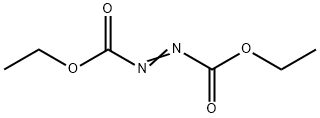


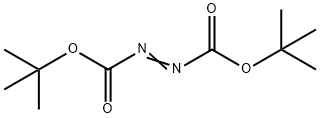


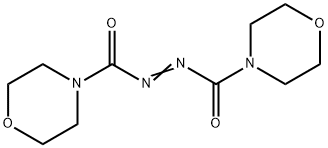
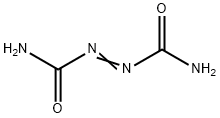
You may like
-
 1,1′-(Azodicarbonyl)dipiperidine, 99% CAS 10465-81-3View Details
1,1′-(Azodicarbonyl)dipiperidine, 99% CAS 10465-81-3View Details
10465-81-3 -
 1,1'-(Azodicarbonyl)dipiperidine CAS 10465-81-3View Details
1,1'-(Azodicarbonyl)dipiperidine CAS 10465-81-3View Details
10465-81-3 -
 1,1′-(Azodicarbonyl)dipiperidine CAS 10465-81-3View Details
1,1′-(Azodicarbonyl)dipiperidine CAS 10465-81-3View Details
10465-81-3 -
 1975-50-4 98%View Details
1975-50-4 98%View Details
1975-50-4 -
 2-HYDROXY BENZYL ALCOHOL 98%View Details
2-HYDROXY BENZYL ALCOHOL 98%View Details
90-01-7 -
 2-Chloro-1,3-Bis(Dimethylamino)Trimethinium Hexafluorophosphate 221615-75-4 98%View Details
2-Chloro-1,3-Bis(Dimethylamino)Trimethinium Hexafluorophosphate 221615-75-4 98%View Details
221615-75-4 -
 14714-50-2 (2-Hydroxyphenyl)acetonitrile 98+View Details
14714-50-2 (2-Hydroxyphenyl)acetonitrile 98+View Details
14714-50-2 -
 118753-70-1 98+View Details
118753-70-1 98+View Details
118753-70-1